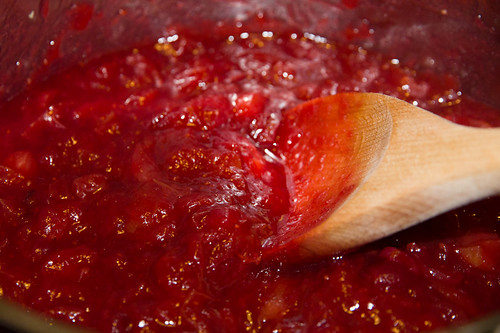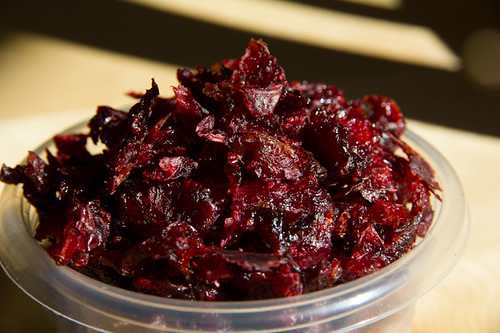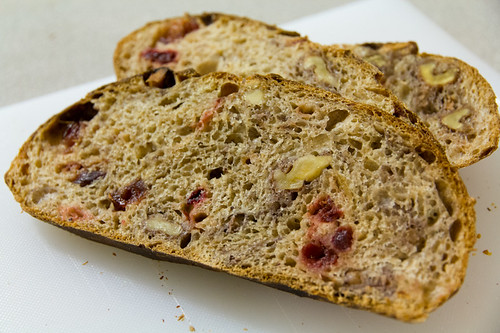
I came up with the idea for this loaf about a month ago during the cranberry harvest season. With fresh cranberries going for such a cheap price, I decided to experiment with them and create a loaf layering the different flavours together. First, we have the cranberry sauce which I made by boiling cranberries, an apple and sugar together until reduced.

Next up, we have freshly dried cranberries (Hmm that's an oxymoron, but I can't think of a better way to describe it). A whole pound of fresh cranberries shrink into a small box of this glistening rubies:

Since both were relatively tart, I decided to balance the flavours by incorporating normal dried cranberries and walnut. Walnut works really well with almost any type of bread lending its buttery and slightly bitter flavours here to balance the whole loaf.

And here's the recipe (all in cups):
1 Tbps Starter
1/2 Cup Flour
1/4 Cup Water
Mix well and let it ferment for about 8 hours or until ripe.
To the above add:
2 Cup AP Flour
1 Cup Red Fife or any WW Flour
1 Cup Water
1/2 Cup Cranberry Sauce
80g Walnut
1/4 Cup dried Cranberry
1/4 Cup freshly dried Cranberry
1.5 Tsp salf
Ferment for 7 hours at 20C. Pre-shape. Rest 30 mins. Shape and proof for 2 hours at 25C. Bake at 230C for 45 mins with 15 mins steam at the start.

I was aiming for about an 70% hydration with 20% walnuts, 15% cranberry. I always think that a fruit and nut loaf works best with a blend of wholewheat and white flour and so I went with a 30% ww formula. Strangely the experience with going back to cups has not been too bad. Given a choice I will still opt for metric as it makes preparation much faster and precise but when working with cups you really have to pay attention to how the dough feel.

I thought that the flavour of the cranberry really shined through...maybe a little too much. If you like it tart, you will like the loaf as it is otherwise I will use all "normal" dried cranberry the next time round to increase the sweetness. The cranberry sauce works well to colour the crumb a light shade of pink. While you can't really taste the cranberry flavour through the crumb, it does add moisture to the loaf and make it quite a bit softer. Overall a great bake for the week! I guessed this was quite popular from the fact that most of it has been eaten by my friends. But after all who can resist a loaf studded with so much goodness?
-Tim